Istrian Food -
Top Istria Gourmet Food Experiences for Foodies
Our Istrian food guide lists the top things to do for food lovers and the best Istria gourmet experiences for foodies. From Istrian wine and olive oil tasting to truffle hunting and our favorite Istrian food and restaurants, find out why the Istrian Peninsula is the perfect destination for food and wine lovers!
We had very high expectations of Istria. I mean, after traveling through Croatia’s Dalmatian Coast and visiting some of the most beautiful cities we’d ever seen while tasting the local Croatian cuisine, we were looking forward to our road trip across the Istrian Peninsula. After all, while we were planning our Croatian adventure, we’ve read so much about Croatia’s wine and foodie county which is known as being the gastronomical heart of Croatia. Well, we’re happy to inform you the Istrian Peninsula has exceeded our (very high) expectations.
On our first day, on our way to Rovinj, we were looking through the window at the dozens of olive groves that passed before our eyes, the occasional lavender bushes and the crystal clear water of the Adriatic Sea, we had no doubt we were going to enjoy our time in Istria. We’ve spent our weekend in Istria visiting some of the most picturesque medieval towns we’ve ever seen and eating the most delicious Croatian food, we went olive oil tasting in Vodnjan and we experienced wine tasting in about every place in Istria and with (almost) every meal We’ve devoured an enormous amount of truffles in a span of a weekend. Seriously, by the time we got to the stunning Plitvice Lakes, we couldn’t even hear the word tartufi anymore. Who could have guessed we’d ever say no to a truffle dish? In short, all of you food and wine lovers, prepare to fall in love with Istria, Croatia.
This post may contain affiliate links, which means we earn a small commission if you purchase from them (no extra costs to you!). For details check our disclaimer.
Table of Contents
What Is Istrian Food?
Istrian cuisine is based on fresh local produce and ancient traditions with a healthy mixture of some modern flare. On the one hand, you have the peasant traditions, earthy recipes that have been passed from mothers to daughters for generations. On the other hand, the abundance of exquisite local produce and seafood and the flourishing tourism industry, have inspired many chefs to create their own modern versions of traditional Istrian cuisine.
Istrian cuisine is a seasonal cuisine and therefore, your foodie experiences will vary according to the season. During spring, the kitchens are filled with asparagus and other spring vegetable delicacies, while summer highlights seafood and shellfish. You’ll find plenty of truffles year-round. Still, fall is definitely the best truffle season and winter highlights the winter crops and some of the more earthy dishes such as the famous Manestra soup (bean soup), stuffed cabbage and the intoxicating Istarska supa – a hot drink made from a mixture of Terran wine, sugar, black pepper and olive oil, served in a ceramic jug, and poured over chunks of toasted sourdough bread.
Several cuisines have influenced traditional Istrian food, but there’s no doubt the Italian cuisine has left the most prominent mark on Istrian fare. From homely peasant konobas to Micheline-starred gourmet restaurants, the variety of flavors of the Istrian cuisine will not let you down. Make sure to taste as many culinary treasures as you can and don’t forget to wash it down with some excellent local wine.
Get our detailed maps for FREE with all the attractions around Istria – Subscribe to our monthly Newsletter
Top Istria Gourmet Experiences
Wine Tasting in Istria
Some History about Croatian and Istrian Wine
The wine-producing tradition in Croatia started with the Greek settlers at least 2,500 years ago. Researchers have found the Illyrians who used to live in Dalmatia in the Bronze and Iron age have already grown grapevines, but it was the Greeks who actually started cultivating grapes and producing wine. The Croatian climate along the coast and in some other parts of the country is perfect for growing grapes. In general, the Croatian wine regions can be divided into two main areas, continental and coastal, but each region can be divided into smaller regional wine counties, and altogether there are more than 300 geographically-defined wine-producing areas in Croatia. The majority of Croatian wine is white, with about 30% of red wine (mainly along the coast) and some rosé and sparkling wines as well.
The Istrian Peninsula is part of the Coastal wine region and officially is referred to as Hrvatska Istra. It can be divided into three main wine areas: Western Istria (Zapadna Istra), Central Istria (Centralna Istra) and Eastern Istria (Istočna Istra). The combination of the Mediterranean climate and the long coastline paired with the hilly topography of the Istrian Peninsula provides the perfect conditions for grape cultivating. Despite its ancient roots, during the Yugoslavian era, the Croatian wine industry took a hit since Istrian winemakers were forced to grow grapes for the government’s cooperative wineries rather than for themselves. This dark era had come to an end after the fall of Yugoslavia when Istrian wine producers were finally free to produce their own quality wines. From the mid-1990’s the Istrian wineries have slowly been gaining a good name for themselves and Istria has earned a reputation as a remarkable wine county. The official stamp of approval came when Wine Enthusiast magazine included Istria in its top 10 wine travel destinations in the world for 2015.
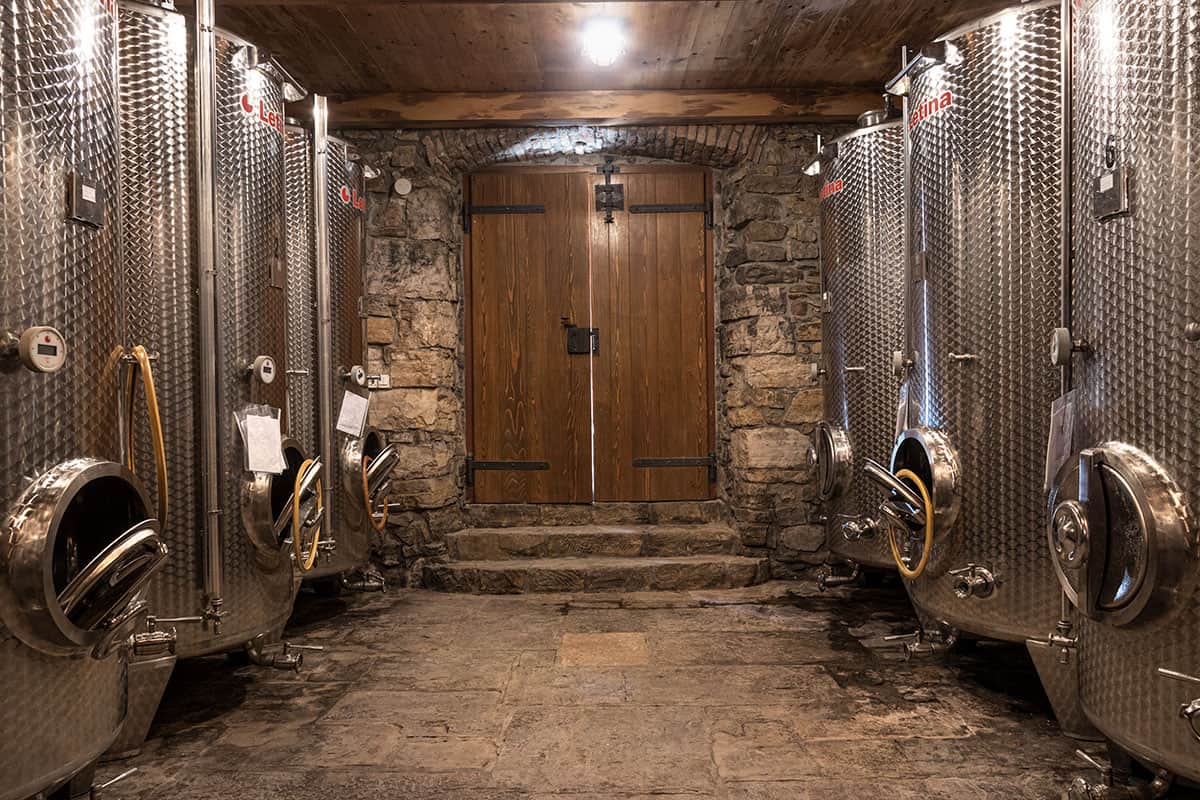
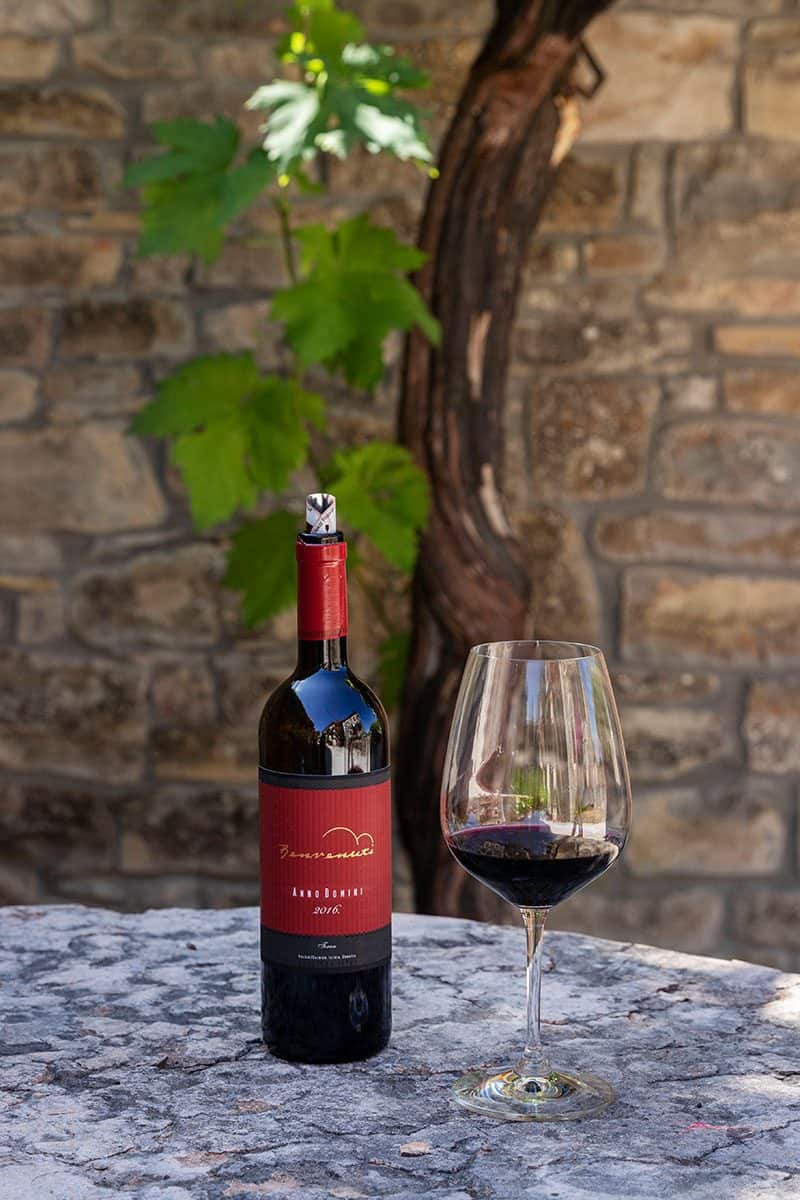
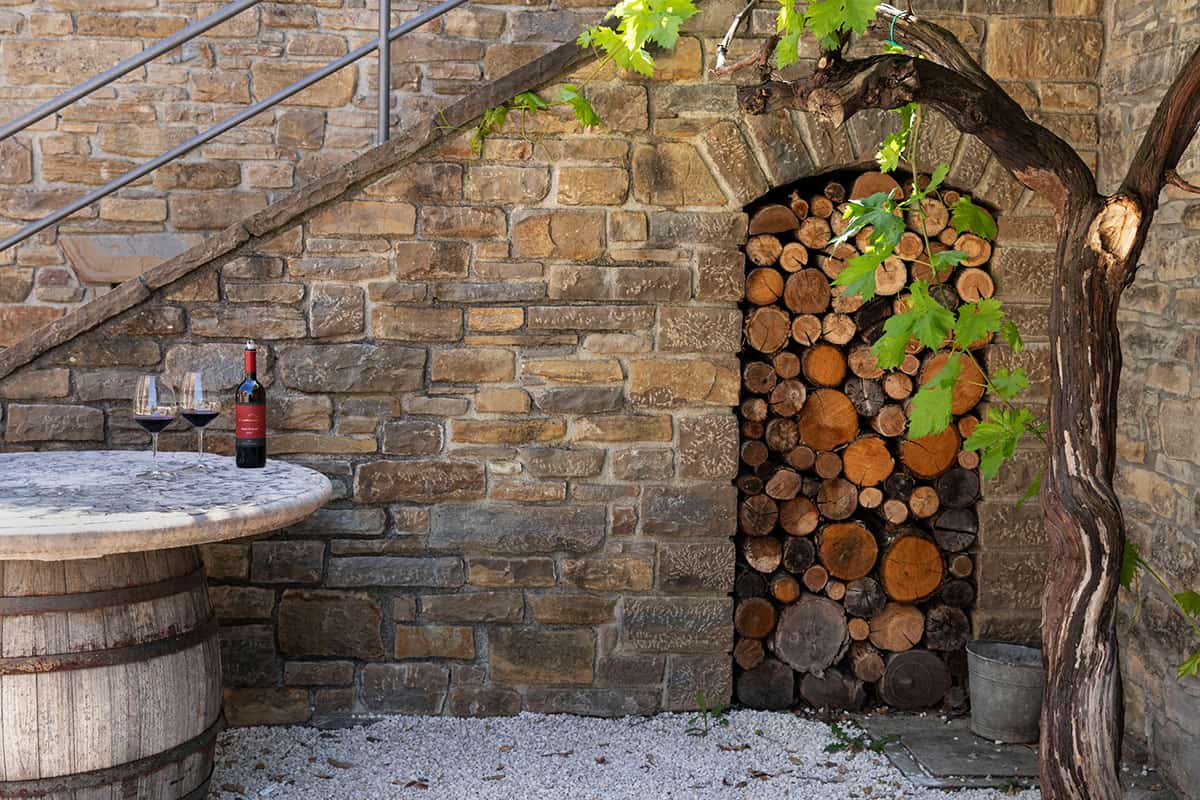
Grape Varieties of Istria
You’ll find some famous international grape varieties in the Istrian Peninsula, such as Chardonnay, Sauvignon, Merlot and Muscat, but there are also ingenious ones out of which the most popular one is probably the local indigenous Malvazija Istarska.
- Malvazija Istarska / Malvasia Istriana – This is Croatia’s second most planted grape variety and it was our favorite Croatian wine. Malvazija Istarska is a white grape that produces wine with somewhat of fruity and floral notes. It can be bottled as a youthful wine or aged wine.
- Teran – Another popular local variety is the red grape Teran. Usually, Teran grapes yield full-bodied wines with somewhat of an earthy flavor, and they should evolve over a few years.
- Muškat Momjanski – The Momjan Muscat is a dry and sweet wine. It has a deep golden color, and it is highly aromatic with fruity and flowery notes.
Where to Find the Best Wineries in Istria
There are so many wineries in Istria, some are more famous than others. We visited Benvenuti Winery which is located in Kaldir, very close to Motovun. Like many other wineries in Istria, this is a family winery. The patriarch of the family, Peter Benvenuti, planted his first vines in 1946. His son and grandchildren has kept the family tradition and many more vines have been planted since then. They grow three grape varieties in their vineyard – Malvasia Istriana, Teran and Muškat Momjanski. Their terraced vineyards are located at several specific micro-locations between 250 to 400 meters above sea level. They grow their grapes on the famous white limestone Istrian soil which gives their wine its rich aroma and freshness. They produce about 72,000 bottles of wine per year, and they have gained quite a repetition for themselves and won several local and international awards. We loved their terraced vineyards, their high-quality wines, and their passion. We always prefer to visit local family businesses that give you a more intimate and personal experience.
Visit Benvenuti Winery at 52424, Kaldir, Croatia (for Google Maps Location)
Email: info@benvenutivina.com | Tel: +385 – (0)98 197 56 51 / +385 – (0)91 583 87 56
There is no shortage of wineries in Istria, so if you are keen on visiting more Istrian wineries, make sure to look for the Signs of Wine routes while driving. If you are a true wine lover, you can visit one of the Istrian wine festivals that take place throughout the year.
For other recommended Wineries in Istria, check out these Istrian wineries.
Istrian Olive Oil
Istria wouldn’t be the first place to come to mind when you think of olive oil. However, it turns out that the Istrian Peninsula is home to some of the best olive oil producers in the world. Flos Olei guidebook, which lists the best olive oil producers around the globe, has named Istria as the best quality olive oil region in the world for the fifth year in a row. The guidebook’s 2020 edition included 79 Croatian extra virgin olive oils, out of which 77 were from Istria. Therefore, when you visit Istria, you must go olive oil tasting
Some History about Croatian and Istrian Olive oil
The production of olive oil in Croatia dates back to the Roman and Greek eras. Olive oil has always been an important part of the local culture and had various usages. It was used for cooking, bathing, as medicine and more. Olive oil is oftentimes referred to as ‘the liquid gold’ and it has been an essential resource for the locals for many centuries. There’s a 1600-year old olive tree on Veliki Brijuni island and plenty of other evidence for the long history of olive oil growing in Istria and Dalmatia. Nevertheless, during the years when Istria was part of Yugoslavia, the men were forced to abandon their olive groves and agricultural lands and support the state by working in governmental plants. During that time, there was no production of olive oil for 40 years. However, the silver lining is that thanks to the fact the olive oil industry was practically dead during the years when the use of pesticides like DDT became the norm, Istrian olive oil has remained 100% organic since the land has remained free of pesticides.
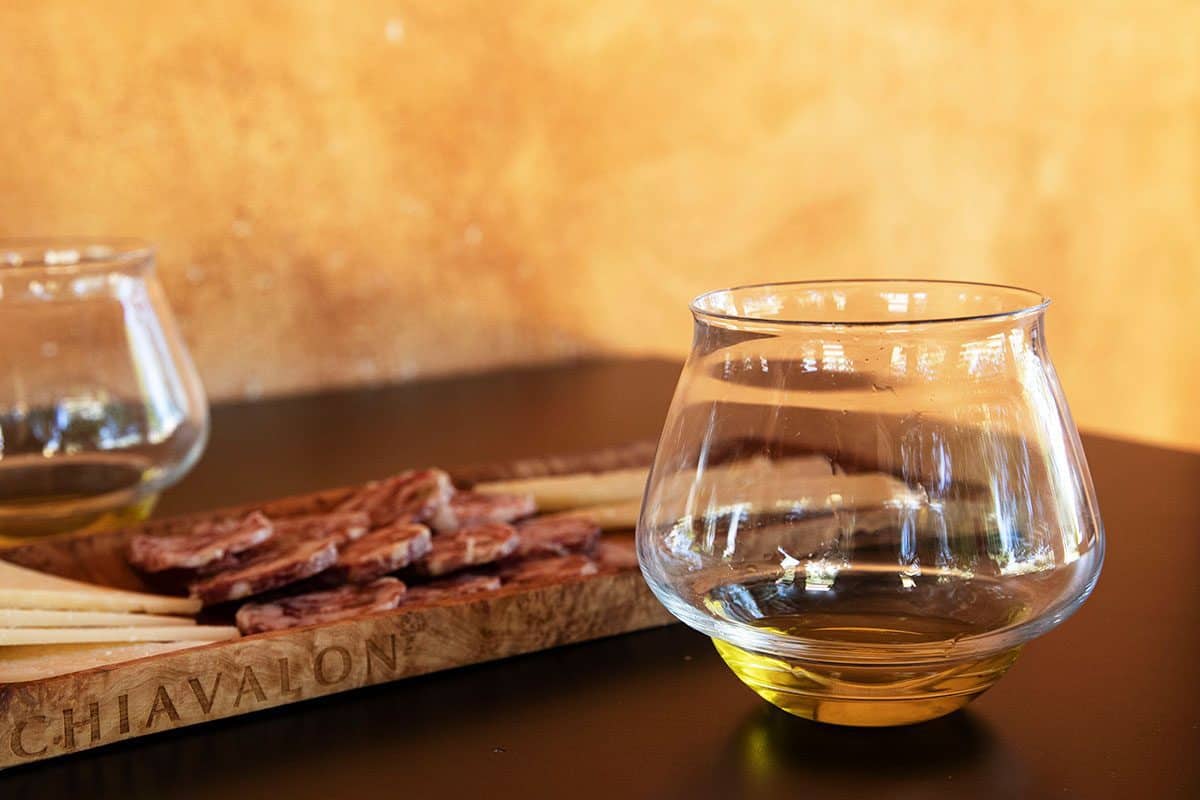
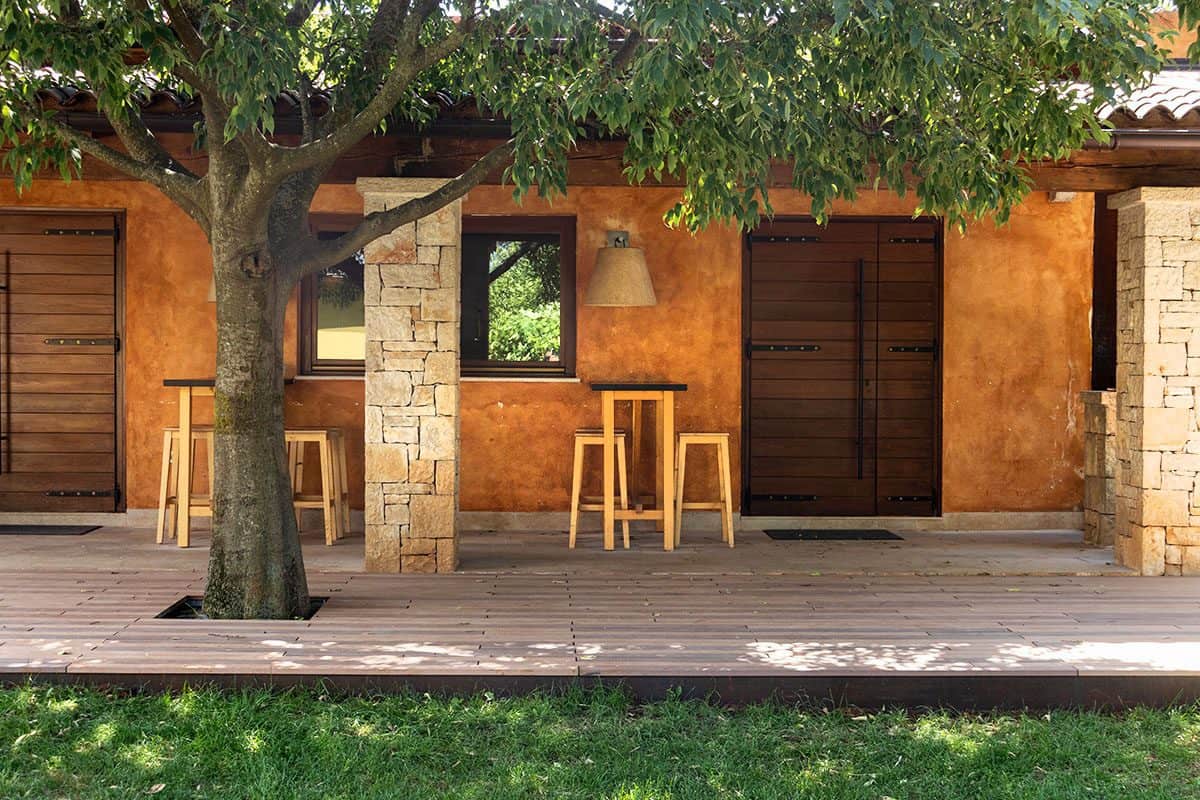
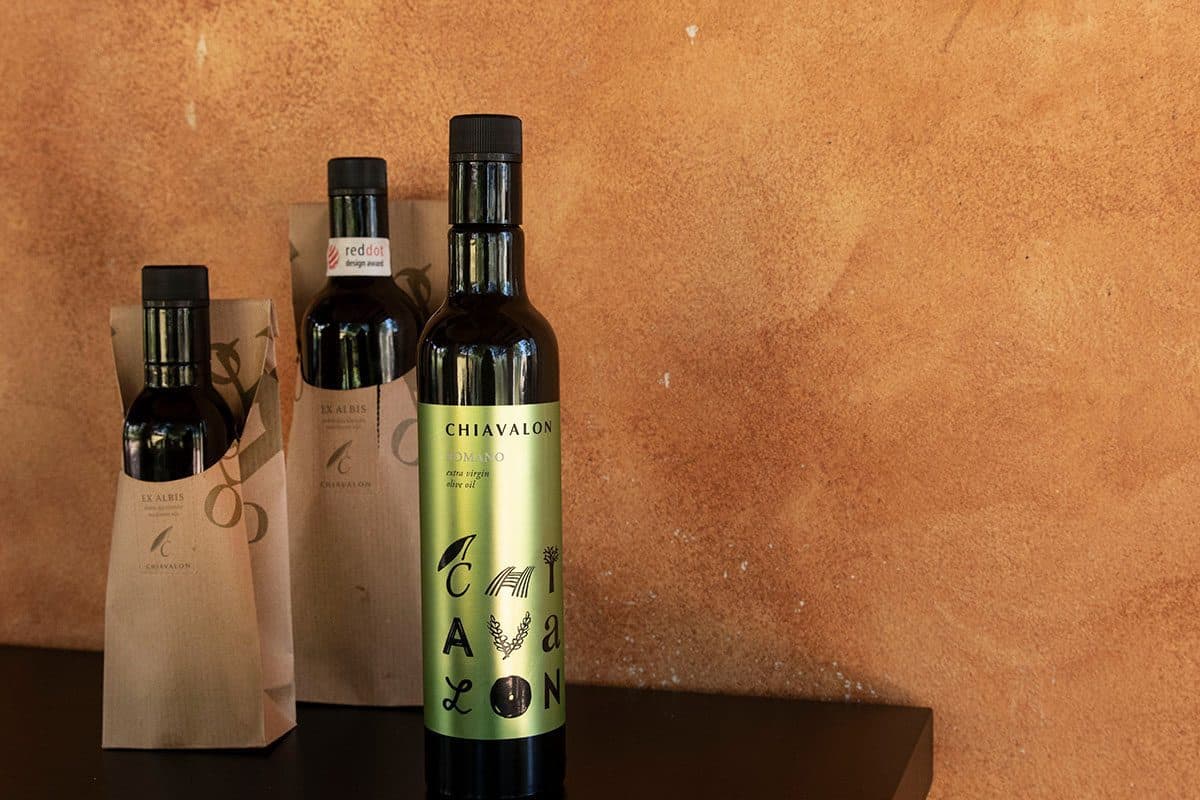
Why Is Istria Olive Oil So Unique and High Quality
The unique geography of the heart-shaped Istrian Peninsula, the climate conditions and the fertile soil have had an essential part of cultivating beautiful olive groves and producing high-quality extra virgin olive oil. Furthermore, the local methods of the relatively small olive oil producers contribute to the unique taste and unbeatable quality of Istrian olive oil. Most olive oil producers prefer an early harvest, which means higher quality olive oil and as explained before, the majority of the Istrian olive oil is organic.
Olive Oil Tasting in Istria
There are many high-quality local producers all over the Istrian peninsula who will happily welcome you to their groves and tasting rooms. While driving in Istria, pay attention to the small signs which signify the olive oil and wine producers along the roads. Personally, we loved visiting Chiavalon Olive Oil in Vodnjan, a small village that is located 20-25 km south of Rovinj. The story behind this local olive oil producer is truly inspiring. Sandi Chiavalon has been obsessed with olive trees since he was 14 years old, and thanks to his determination, fascination, skills and supportive family, Chiavalon has earned numerous awards and worldwide recognition. Even the prestige Flos Olei olive oil guide has ranked their Extra Virgin Olive Oil Ex Albis (a unique blend of five different olive varieties) among the Top 15 olive oils in the world. To learn more about olive oil tasting and our experience at Chiavalon Olive Oil in Vodnjan, check out our Istrian Olive Oil Guide.
Visit Chiavalon olive Oil at Ul. Vladimira Nazora 16C, 52215, Vodnjan, Croatia (for Google Maps Location)
Email: visit@chiavalon.hr | Tel: +385 52 511 906 / +385 98 860 566
Insider Tip: If you don’t have enough time to go olive oil tasting around the Istrian Peninsula, you can visit the House of Istrian Olive Oil which is situated in Pula. There you can learn about the history of olive oil in Istria, and they do olive oil tasting as well. You’ll find olive oils from 30 top Istrian producers at their shop.
Istrian Truffle Foodie Fest
Once you taste truffles, their unique nutty and addictive taste stays with you forever. I remember the first time I tasted truffles. It was in a restaurant in Spain on my first trip with my sister. We had a pasta dish with creamy mushroom and truffle sauce, and we devoured it in a matter of minutes (and ordered another one instantly). Ever since then, I’ve been an addict. Well, imagine my excitement and delight to learn that Istria is a truffle-lovers paradise. Everywhere you go, you’ll be able to smell the nutty aroma of truffle dishes. As long as we’re talking about Istrian gourmet food experiences, you could eat truffles for breakfast lunch and dinner if you choose to. Istrian cuisine is full of traditional and modern truffle dishes, from scrambled eggs with truffles to truffle pasta, meat stews with truffles, truffle cheese, truffle ice cream, and many more trufflicious recipes. Truffle addicts be warned, you’ll have a hard time leaving Istria.
Some History about Istrian Truffles
Truffles have always had an extraordinary reputation starting with the Romans, who considered truffles as an aphrodisiac. They used to throw lavish feasts for their most honored guests with lots of truffle dishes. These little weirdly looking black “potatoes” are considered as a delicacy by foodies worldwide. For years the truffle crown belonged to Italy’s Alba and Piedmont counties and France’s Provence county. However, in recent years, Istrian truffles have been a significant competitor in the global market.
Unlike the Romans, the Istrians were slow to grasp the treasure they had in their hands. The story of Istrian truffles began only in the middle of the 20th century when a local farmer stumbled upon a strange-looking potato with a pungent smell. Back then, the farmers used to feed their pigs with these smelly black potatoes. At some point, Italians from Alba have heard of these ‘smelly potatoes’ and offered to provide Italian delicacies (which were hard to come by during the Yugoslavian era) to the local farmers in exchange for these truffles. Later, the farmers were compensated with actual money, and for decades Istrian white truffles were sold as “original” truffles from Alba.
The turning point was in 1999 when the restauranteur Giancarlo Zigante found a 1.3 kg truffle, and instead of selling it, he decided to throw a festive dinner for locals. He also invited some journalists and the Croatian president, and that feast finally made the Istrians aware of the treasure they had in the palm of their hand. Since then, many foodies and chefs flock to the Istrian countryside every year, especially during the autumn (aka truffle season).
What’s so great about Istrian truffles (other than their addictive taste) is the fact you can find several kinds of truffles all year round. By the way, since that 1.3 kg truffle which made it to the Guinness Book of Records, Zigante has found another the-size-of-your-head-gigantic-truffle that weighted, drums please, almost 5 kilos!
So what makes Istria such a truffle capital? The unique soil and climate conditions, especially around the forests at the valley of Mirna River, turn it into the perfect habitat for truffles.
Varieties of Istrian Truffles
Istria has various kinds of truffles that grow at various times throughout the year.
The White Truffle (Tuber Magnatum Pico) – The white truffle is the most sought-after and prestigious truffle thanks to its intoxicating earthy and musky aroma. It has an uneven oval shape with a pale yellowish or goldish exterior stained by red and brown spots. These truffles are best eaten raw since they lose their aroma and unique flavor during cooking. The best way to serve the white truffles is to slice them thinly and spread them over any dish.
White truffle season: September to January
The Black Summer Truffle (Tuber Aestivum) – The black summer truffles are the most common type of truffles. These large pyramid-shaped truffles have dark brown skin and a yellowish-grey interior that turns to dark brown towards the end of summer. They can be eaten cooked or raw.
Black summer truffle season: June till Fall
The Black Winter Truffle (Tuber Brumale) – The black winter truffle is another very sought-after truffle thanks to its intense earthy aroma and unique taste. It is very similar in size and shape to the black summer truffle, but it has a smoother and darker almost blackish-colored skin. It is better to cook it before consumption.
Black winter truffle season: September to January.
The Perigord Black Truffle (Tuber Melanosporum) – This is the most highly-valued truffle out of the black truffles thanks to its aromatic scent and intense flavor. These truffles are round in shape and have brownish-blackish skin and dark flesh with white veins. They should be cooked before consumption.
Perigord black truffle season: January till Spring.
Truffle Hunting in Istria, Croatia
The best season to experience truffle hunting in Istria is the fall season, so if you’re keen on experiencing a successful truffle hunt, plan your visit for September – November. Truffles lose some of their aroma and flavor within a few days after they are dug out of the ground. Therefore, many of the truffles are also processed into pastes, sauces and other such condiments. Most truffle hunts are taken place around the forests of Oprtalj, Livade, Motovun and Buzet. In Istria, the majority of the truffle hunters uses trained dogs rather than pigs (as customary in Italy) since they are easier to control and transport. Every hunter has 4-5 dogs which are taught from an early age to recognize and love the unique aroma of truffles. Truffle hunting requires patience and a willingness to get your shoes a bit dirty, but it is a unique experience that is a must for foodies at heart.
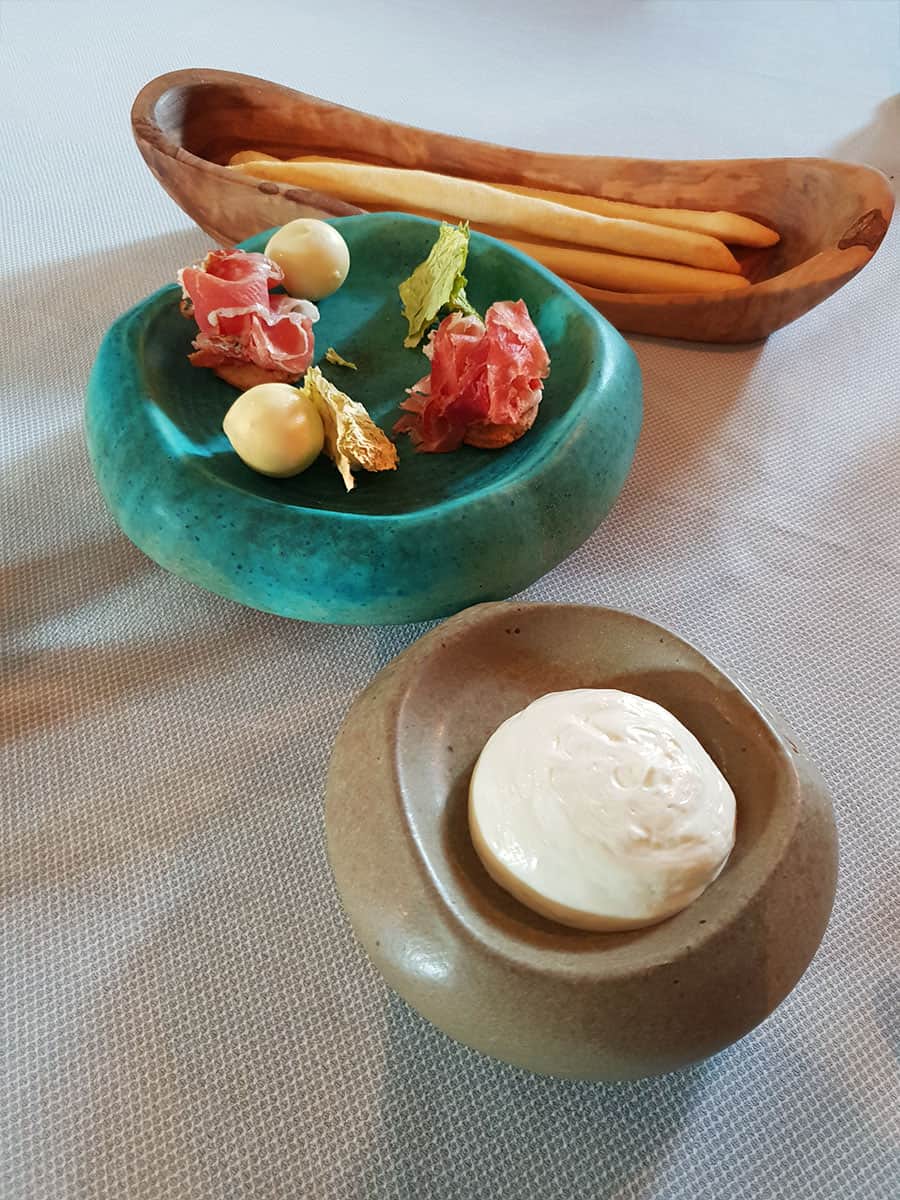
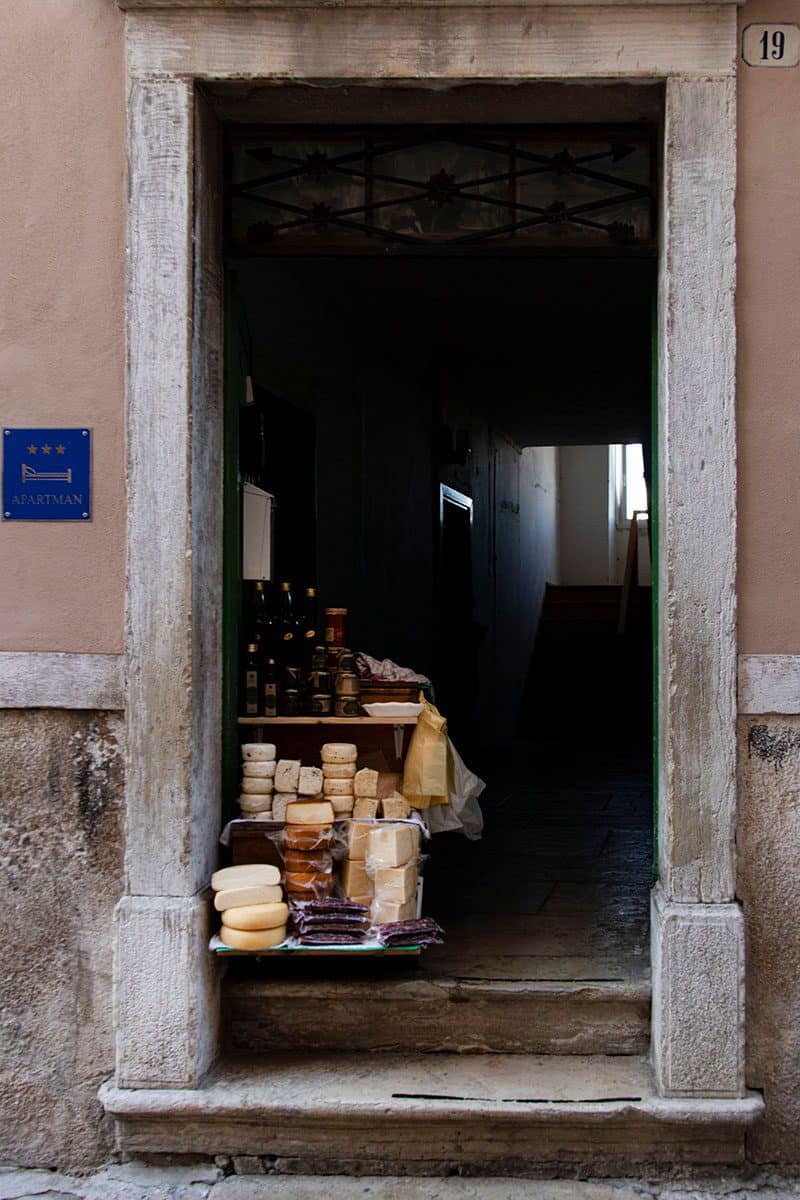
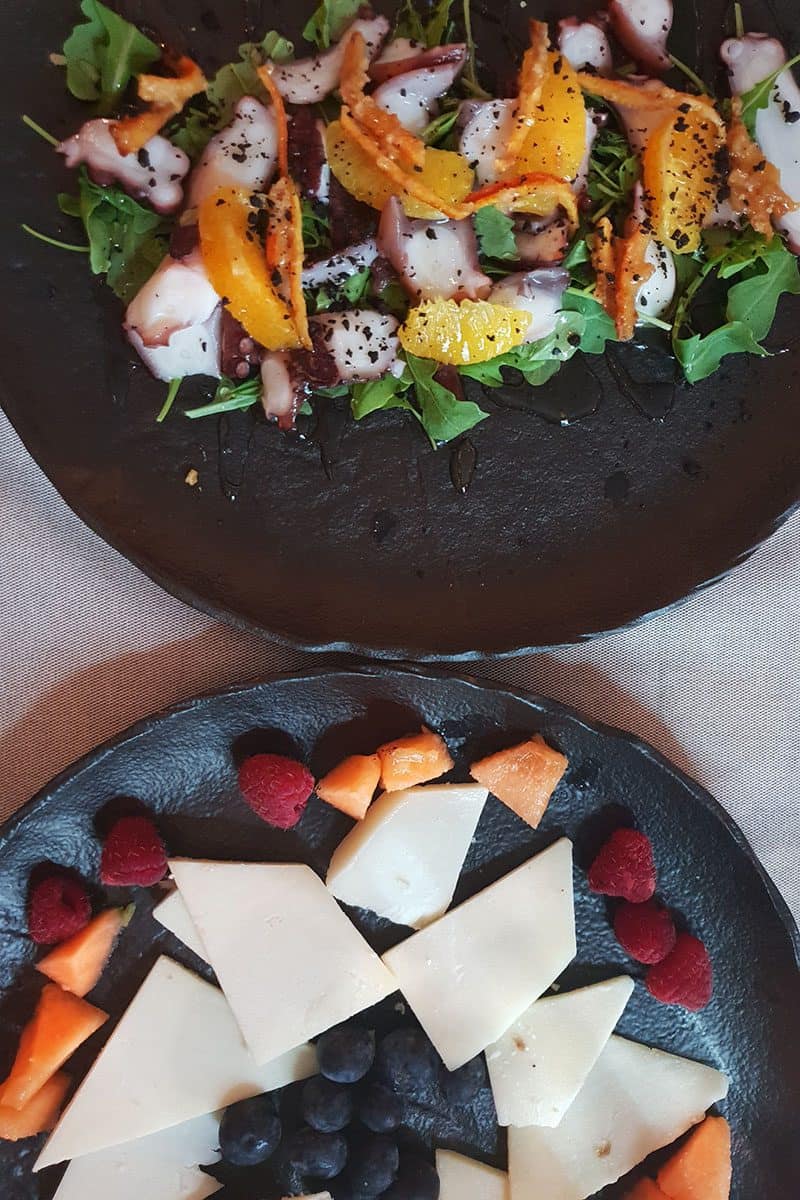
Istria Gourmet Food Tour
Additional Istrian Food and Delicacies any Foodie Should Try
As long as we are talking about Istria gourmet food and Istrian fare, one should taste other delicacies that are found in the region. Olive oil, wine and truffles might be the crown in the jewel, but there are so many other delights you should include in your Foodies’ gourmet food tour of the Istrian peninsula.
Istrian Seafood
You’ll find first-class seafood dishes around Istria, especially along the coast. The Adriatic Sea is home to more than 400 species of fish which means a cornucopia of seafood dishes and grilled fish made from the catch of the day. You’ll find dishes with anchovies, sardines, shrimp, octopus, scampi and many more varieties. If you’re an oyster lover, make sure to visit Lim Bay and try some of their fresh oysters. Scallops lovers should try the Novigrad scallops.
Istrian Cheese
We were expecting amazing seafood in Croatia but cheese? Who knew the Croatian cheese was so addictive? One of our favorite things to do in Croatia was taking a break with some wine and a cheese platter. Croatian cheese has been gaining recognition and awards in recent years. You’ll find cow, goat and sheep cheese all over Croatia, and lately, small dairies have popped out in many places around the Istrian peninsula. Instead of selling their milk to industrialized factories, they’ve invested time, money and lots of passion into creating their own top-quality and organic products. They make many dairy products from yogurt, cream, and mozzarella to various hard cheeses. You’ll have plenty of opportunities to try out some of the best Istrian cheese in many restaurants and wineries, and you can even visit some of the local diaries if you wish. One of the most famous Croatian cheese is the Pag cheese that is produced on the island of Pag (very close to Zadar on the Dalmatian Coast). It has won many awards and can be found all over Croatia. We loved all the various kinds of cheeses we tasted in Istria, you can’t go wrong with a glass of wine and a cheese platter, but you can check out these 5 recommend Istrian cheeses.
Wild Asparagus
If you’re visiting Istria in spring, you’ll have plenty of asparagus dishes to choose from. Wild asparagus is picked from mid-March to late April, and during this period many restaurants take part in the Days of Asparagus Festival in Istria. The asparagus fritaja (frittata) is a must-try dish, but there are also soups, homemade pasta, risottos and many more dishes.
Istrian Honey
Honey is another Istrian product that has been used for centuries by locals for medicinal purposes as well as for food. If you want to learn more about beekeeping and taste the Istrian honey, you can visit some of the beekeepers who live in northwestern Istria. Other than learning about their craft and the unique characteristics of Istrian honey, you would have a chance to sample and buy some of their products. There are several honey points around the Istrian peninsula, most of them are pretty small and you’d better make an appointment before dropping by. There is a lovely shop in Livade, Medea – Janković, where you’ll find honey and honey products (including skincare products). Other than that you can contact the following beekeepers:
Api Melon | Address: Motovunska 12, Petrovija, 52470, Umag, Croatia
Pinici Med | Contact Details | Address: Rakotule 32c 52423 Karojba
Api Vežnaver | Contact Details | Address: Škofi 34 52428 Oprtalj-Portole
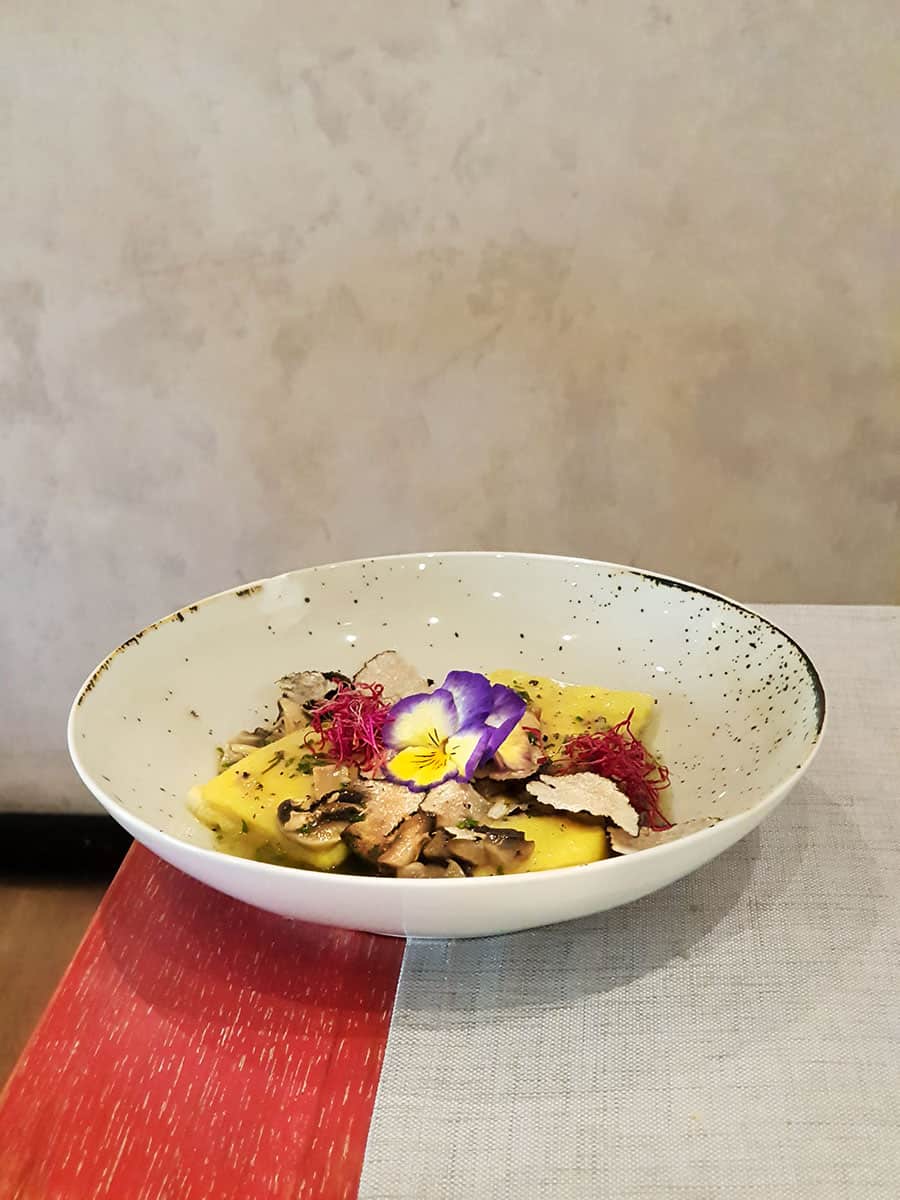
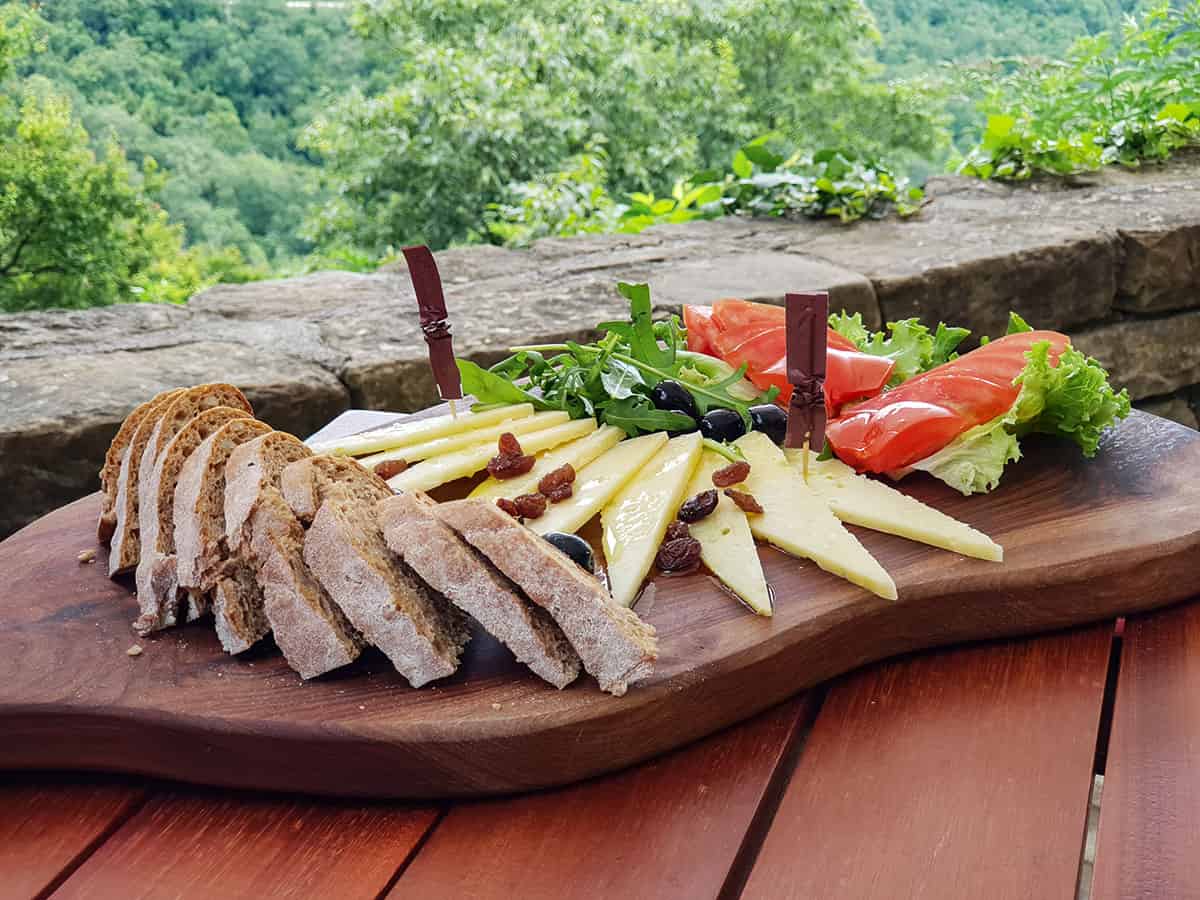
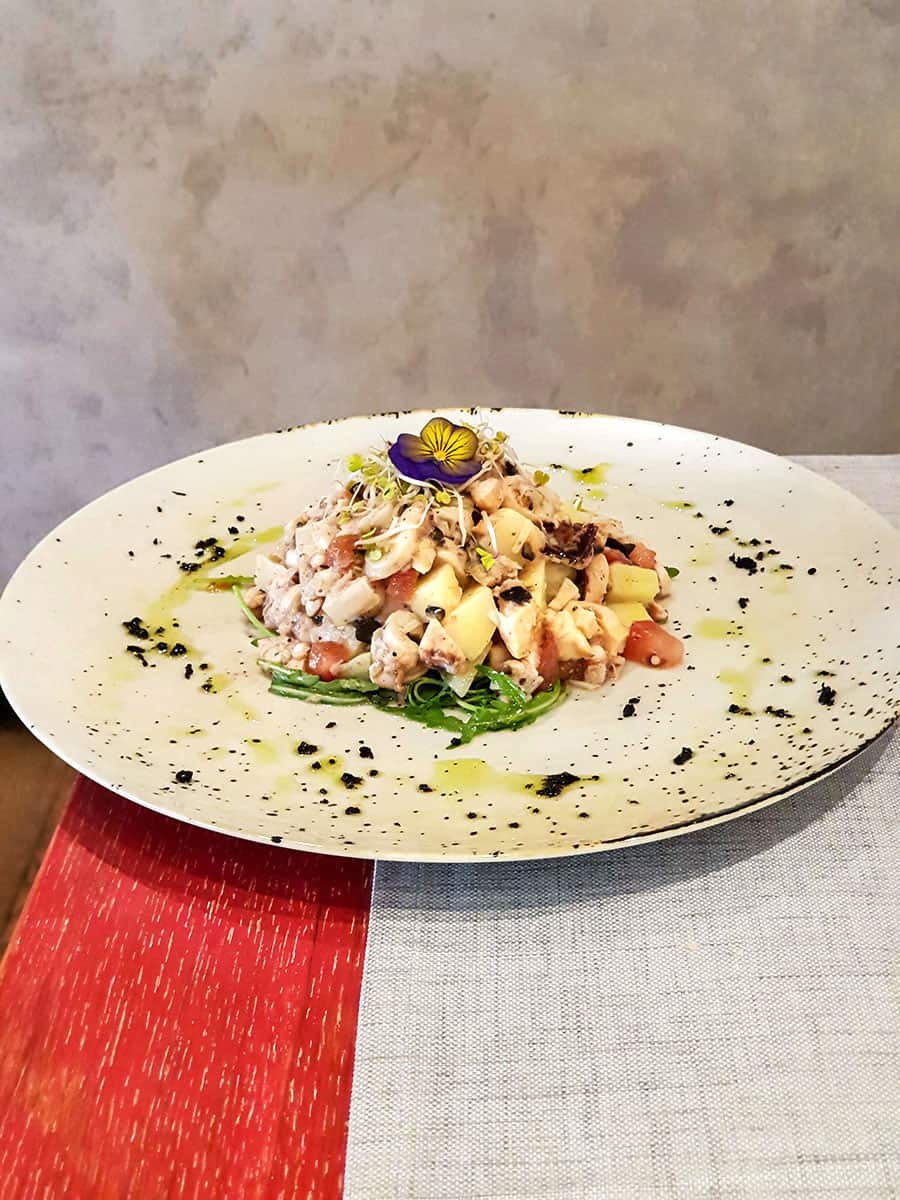
Pasta, Gnocchi and Risotto
In recent years, many travel magazines have crowned Istria as the new Tuscany. With its abundance of wineries, rolling hills, charming medieval towns, stunning views and local cuisine, indeed, there are many similarities between Tuscany and Istria. Although traditional Istrian dishes have had other cultural influences, it seems the Italian cuisine is very dominant around Istria. When in Istria, you must try the local pasta dishes. Depending on the season. You’ll have various sauces, and fresh vegetables to accompany your pasta, but one pasta you can always count on is the truffle-mushroom pasta. You’ll have many opportunities to taste different pasta, gnocchi and risotto dishes all over Istria. Traditional pasta dishes include fuži, Pljukanci, Posutice and potato gnocchi which is usually served with meat stew. The black cuttlefish risotto is another must-try dish.
Istrian Polenta
Another local dish that we loved, was the polenta. Poletna is made from cornmeal and it can come in many shapes and consistencies. You can eat it as a creamy porridge, or grilled. This comfort food whose origins can be traced to Northern Italy, has become a staple of Croatian cuisine. Many times it will be served as a side dish for local hearty stews but we especially enjoyed the grilled polenta which was new to us.
Croatian Rakija
Another item that should be on your foodie bucket list is the local Rakija! Rakija can be found all over Croatia. It’s a brandy that is made from fruits and herbs and though we are not fans of brandy, we loved the Croatian Rakija. What’s great about this drink is that every area in Croatia has its own favorite rakija flavors so make sure to have a taste of the local rakija in each place you visit. If you happen to be in the area of Buzet, make sure to visit Destilerija Aura, a local family-run factory which makes different kinds of rakija and homemade jams.
Istria Gourmet Festivals
Lately, everyone seems to talk about Istria as the new foodie destination. From truffles, olive oil and wine to fresh seafood and homemade pasta dishes, Istria is the new rising star of the culinary tourism. The Tourism Board of Istria can undoubtedly take a hint and nowadays, several Istrian Festivals focus on gourmet experiences in Istria. Restaurants and local konobas offer dishes that are focused on a specific seasonal ingredient such as asparagus in the spring or seafood and shellfish in summer. Of course, there are also festivals dedicated to olive oil, wine and truffle. Don’t forget to check the dates of all Istrian gourmet festivals before you plan your trip.
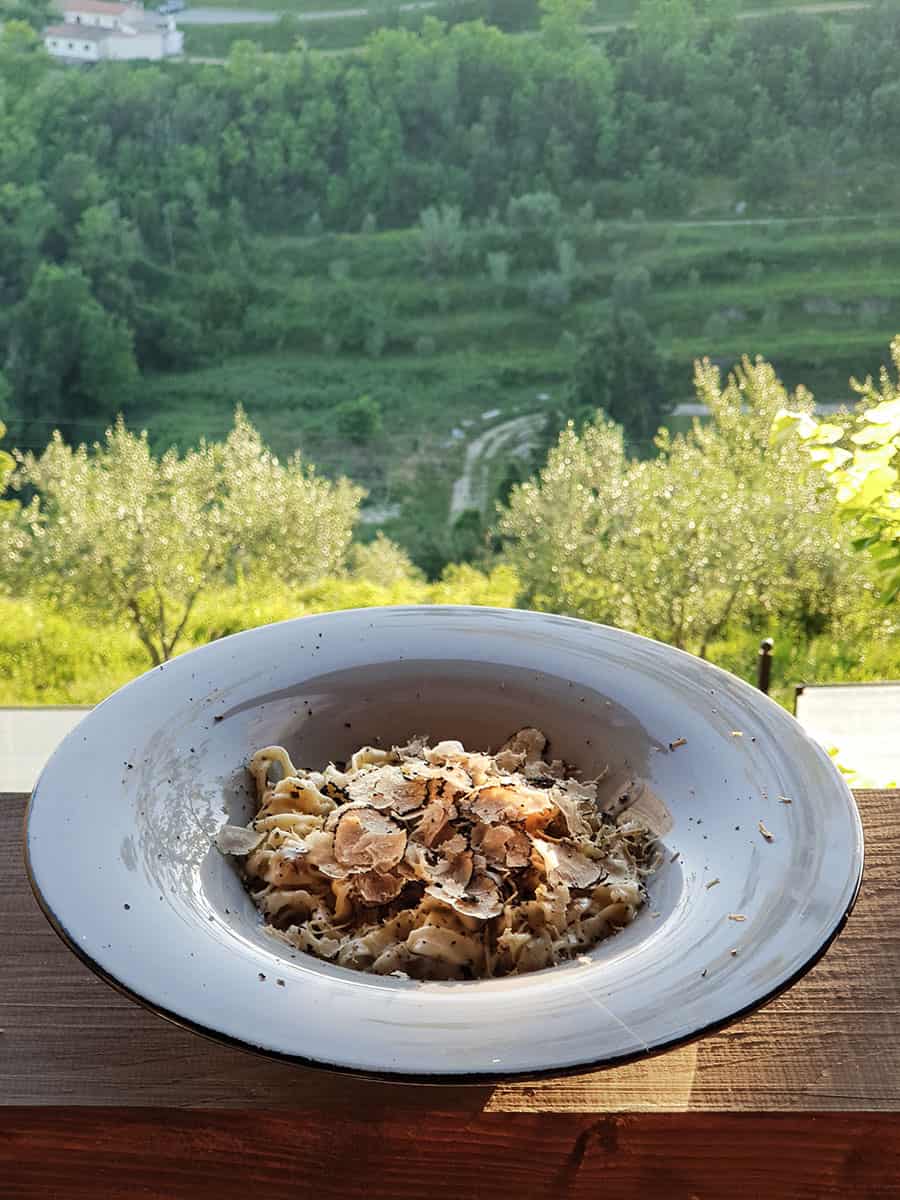
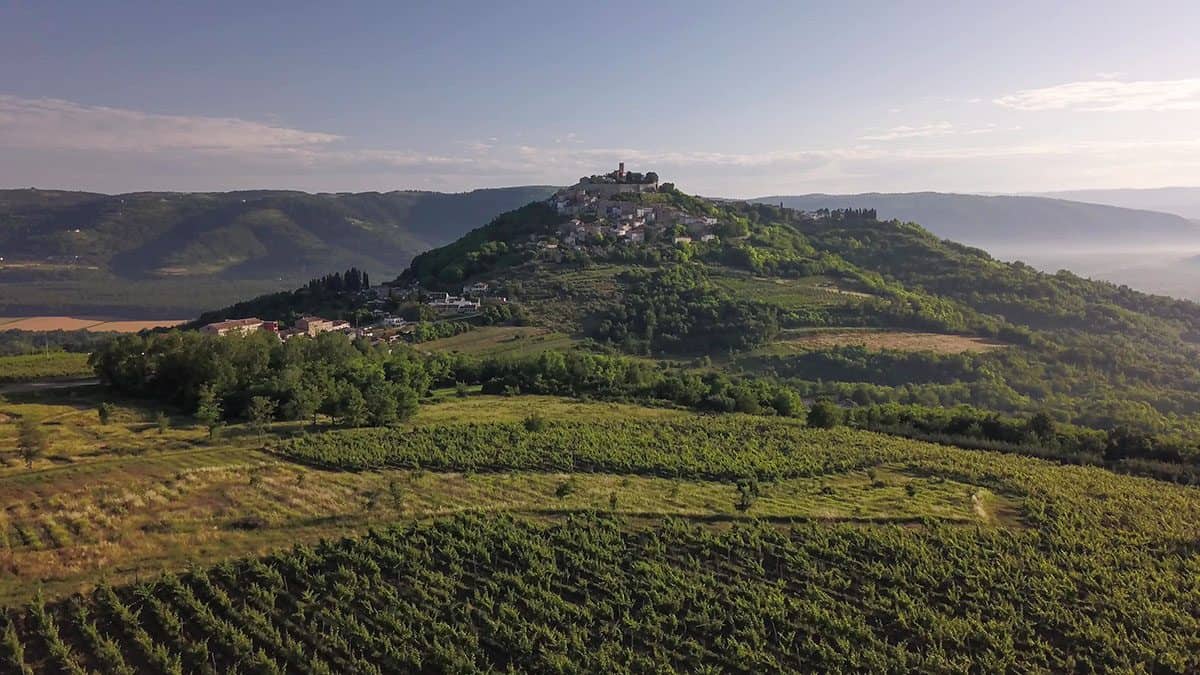
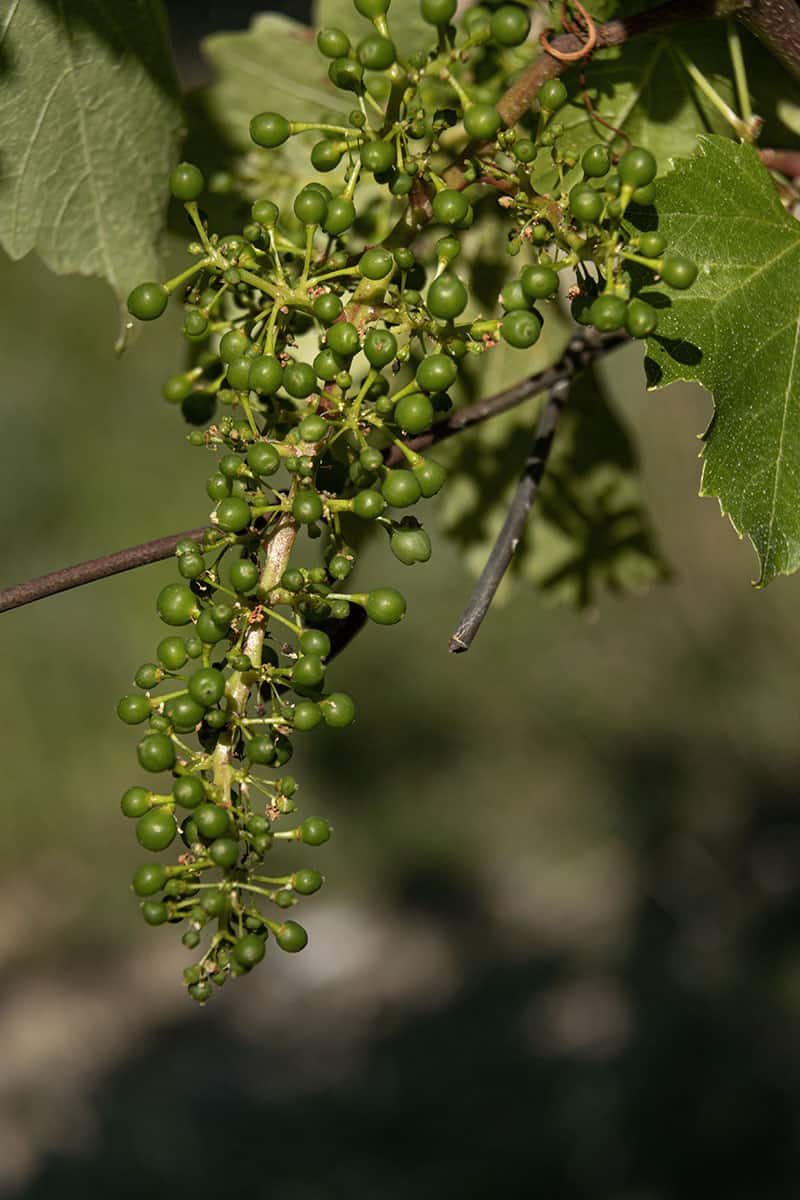
Best Restaurants in Istria Croatia
Istria has a variety of great restaurants, from Michelin-star gourmet restaurants to simple and homey knoboas. Here are some of our favorite restaurants around the Istrian Peninsula:
Rovinj Restaurants
- La Puntulina – Probably our favorite restaurant in Istria. Every dish was a feast for the eyes and the palate, and the setting was gorgeous. You’d better make a reservation in advance. Address: Ul. Sv. Križa 38 Tel: +385 52 813 186
- Bookeria – This one was a surprise. We’ve never heard about it before, but we loved the delicious food and beautiful plating. They also have great breakfasts! Address: Trg G. Pignaton Tel: +385 91 219 0007
- Adriatic Brasserie – One of the best restaurants in town for a gourmet experience. It’s located at the stylish boutique hotel, Hotel Adriatic. Don’t forget to reserve a table for dinner if you want to enjoy a special dining experience. Their seafood platter is amazing and if you’re into desserts, you must order the dessert tower. Address: Obala Pina Budicina 16 Tel: +385 52 803 520
Restaurants in Livade
- Zigante – One of the most well-known and prestigious restaurants in Istria with a Michelin acknowledgment. Thanks to Giancarlo Zigante, Istria has been recognized as a truffle paradise. Their menu offers dishes with fresh truffles according to the truffle season and there’s an exclusive tasting menu if you wish to indulge in a unique and memorable evening. We came here for an early dinner and thought we didn’t try the tasting menu, our dishes were amazing. Address: Livade 7, 52427, Livade Tel: +385 52 664 302
- Konoba Dolina – If you are looking for a tasty truffle meal in Livade with more of a homey atmosphere and budget-friendly dishes, check out Konoba Livade. Great food and atmosphere, at very reasonable prices. Address: Gradinje 59/1, Livade 52427 Tel: +385 (0)52 664 091
Restaurants in Motovun
- Konoba Mondo – This restaurant became one of the most sought-after eateries in Istria after Anthony Bourdain has paid them a visit as part of his No Reservations TV show. We haven’t eaten here ourselves since we just had lunch in Livade, but it is considered as one of the best places to have a truffle meal in Motovun.
If you are looking for gourmet Istrian food, you can check any of these restaurants which have gotten a recognition by Michelin
Istria is the new shining star in the global gastronomy scene and with its abundance of fresh produce and seafood, it certainly delivers a unique gastronomic experience any foodie would enjoy. On top of the cornucopia of flavors and gourmet food experiences, Istria offers stunning views and medieval villages, beautiful beaches with crystal clear water and the nicest people you can find. Our Istria road trip was our favorite part of our Croatia vacation, from the stunning views to the gourmet food experiences. So make sure to visit the Istrian Peninsula and don’t forget to put some of these Istrian gourmet experiences on your foodies bucket list.
For More Information and Tips about Istria and Croatia
Don't forget to pin it for later!
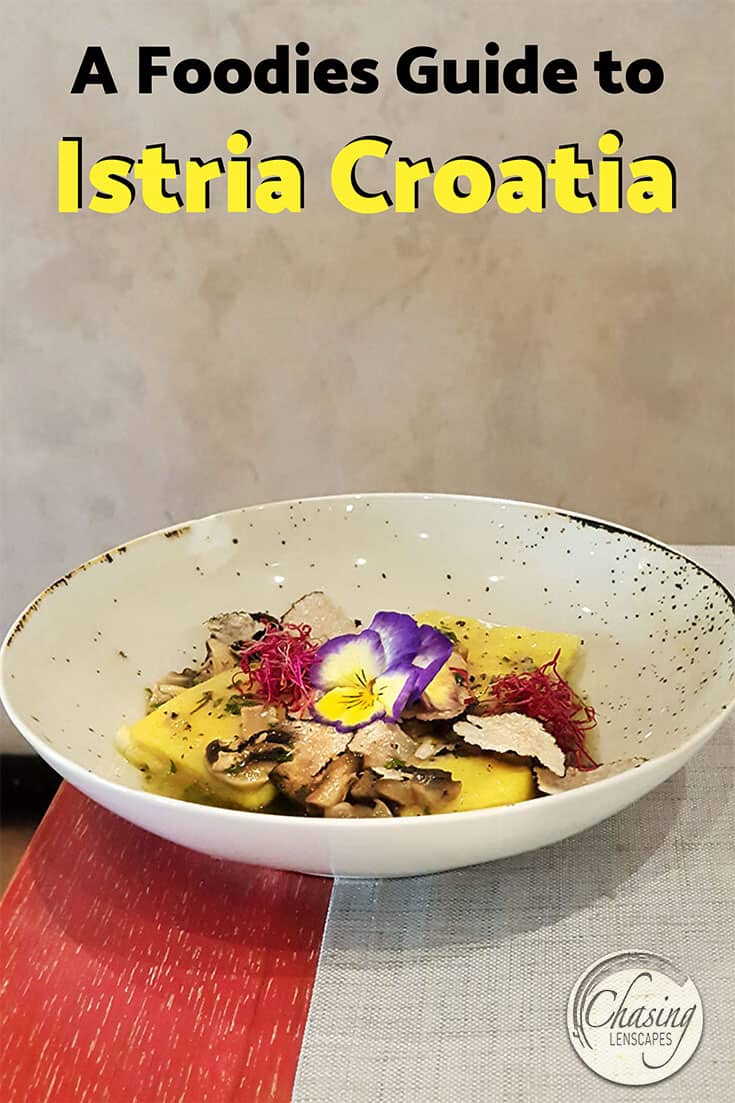 .
. 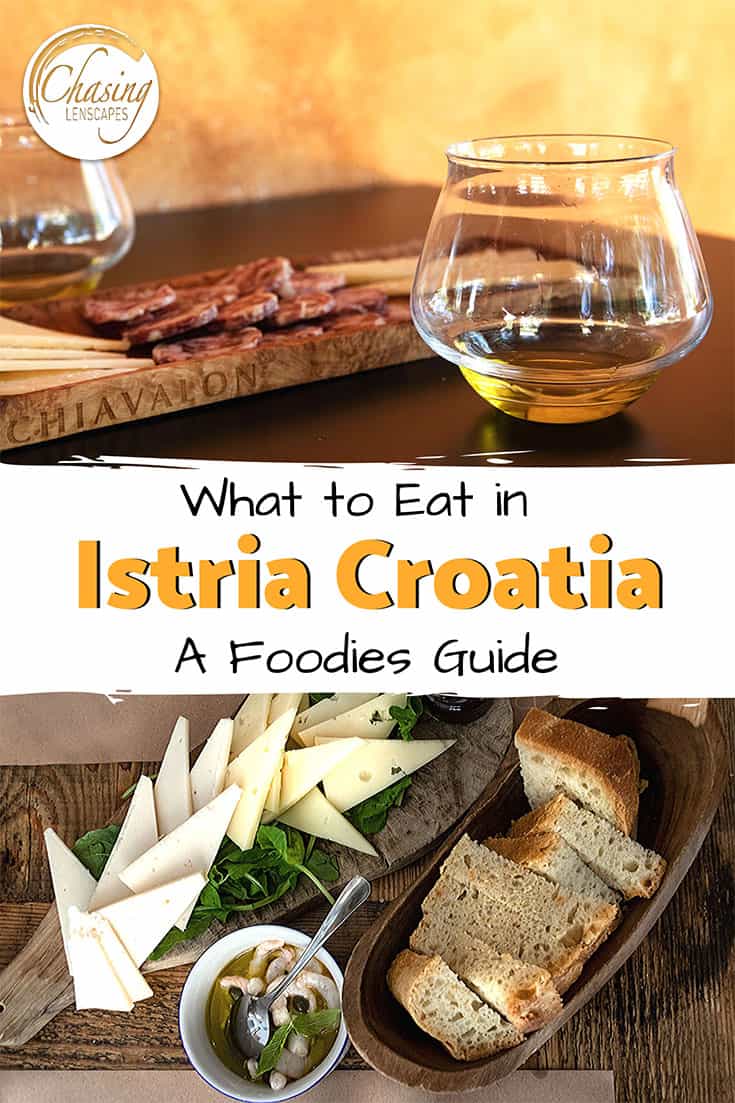 .
. Check out some of our other city guides!
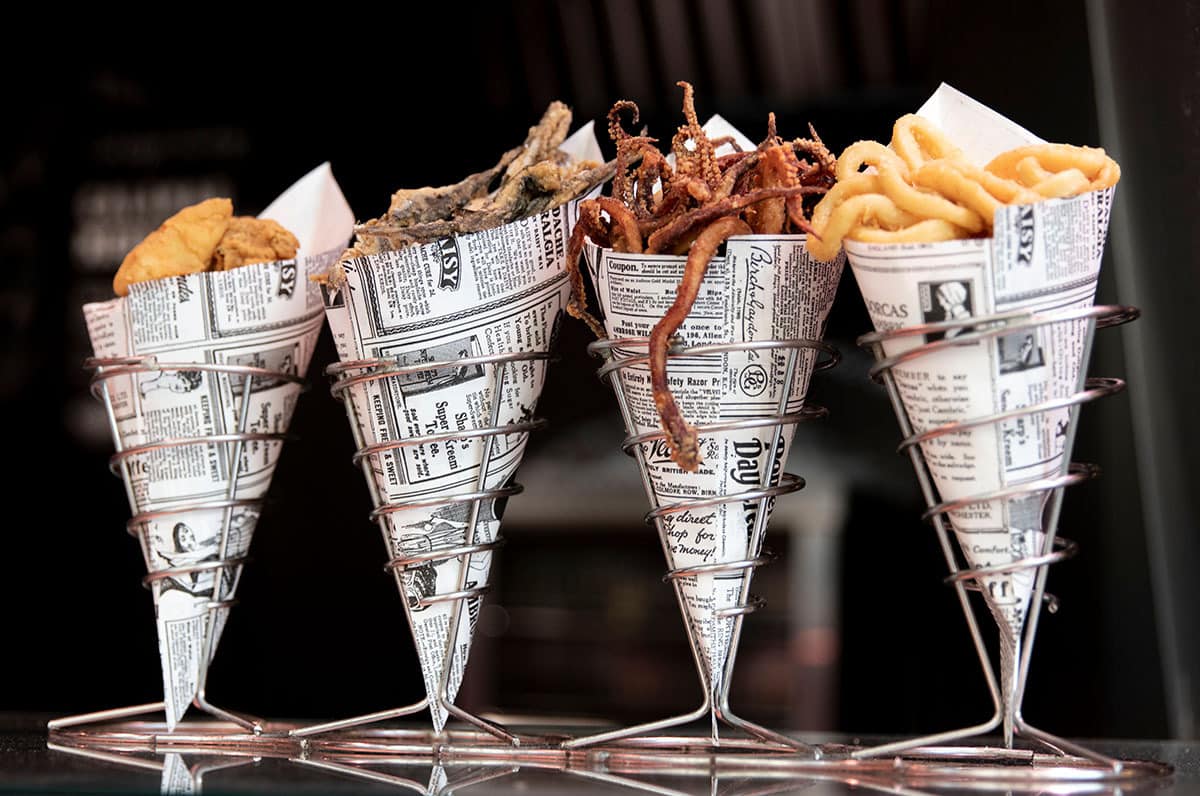
A Foodie Guide to Madrid
Check out some of the best places to eat in Madrid. From the coolest food markets to the top restaurants, tapas bars and healthy cafes.
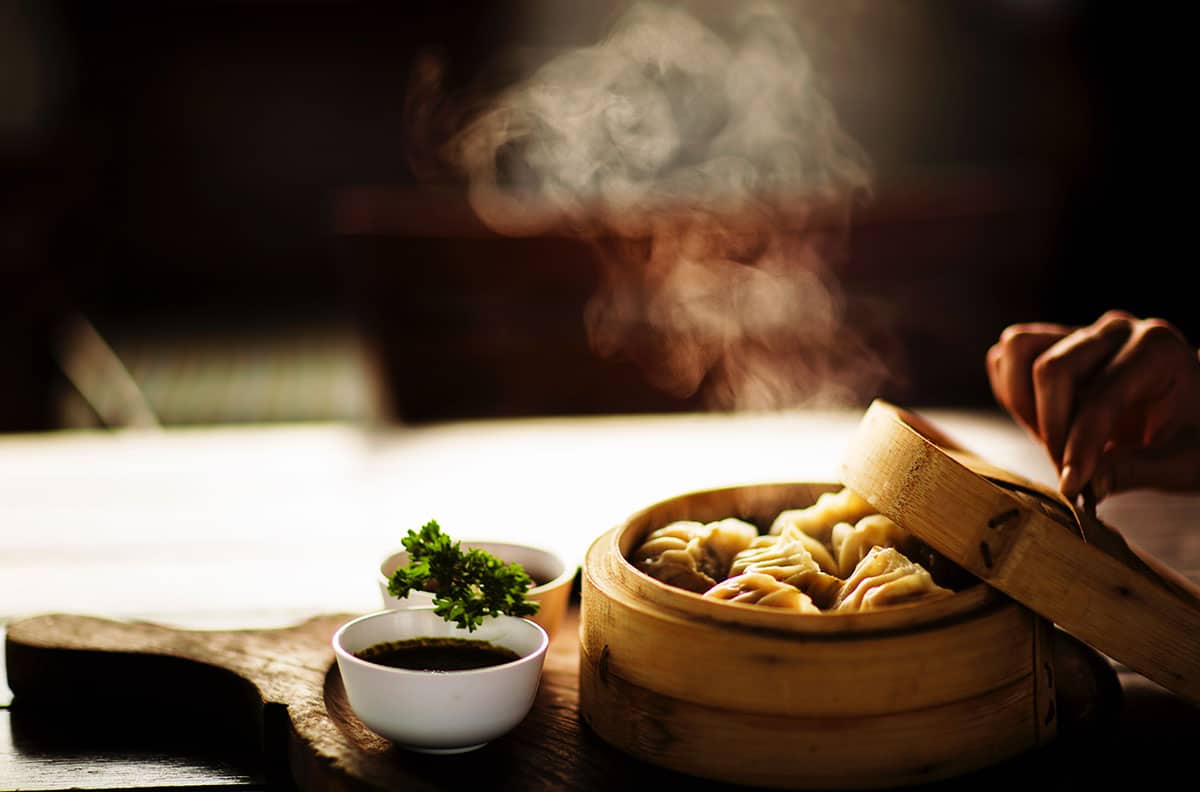
What to Eat in Singapore
What and where to eat in Singapore. From traditional dishes to healthy and trendy coffee shops!
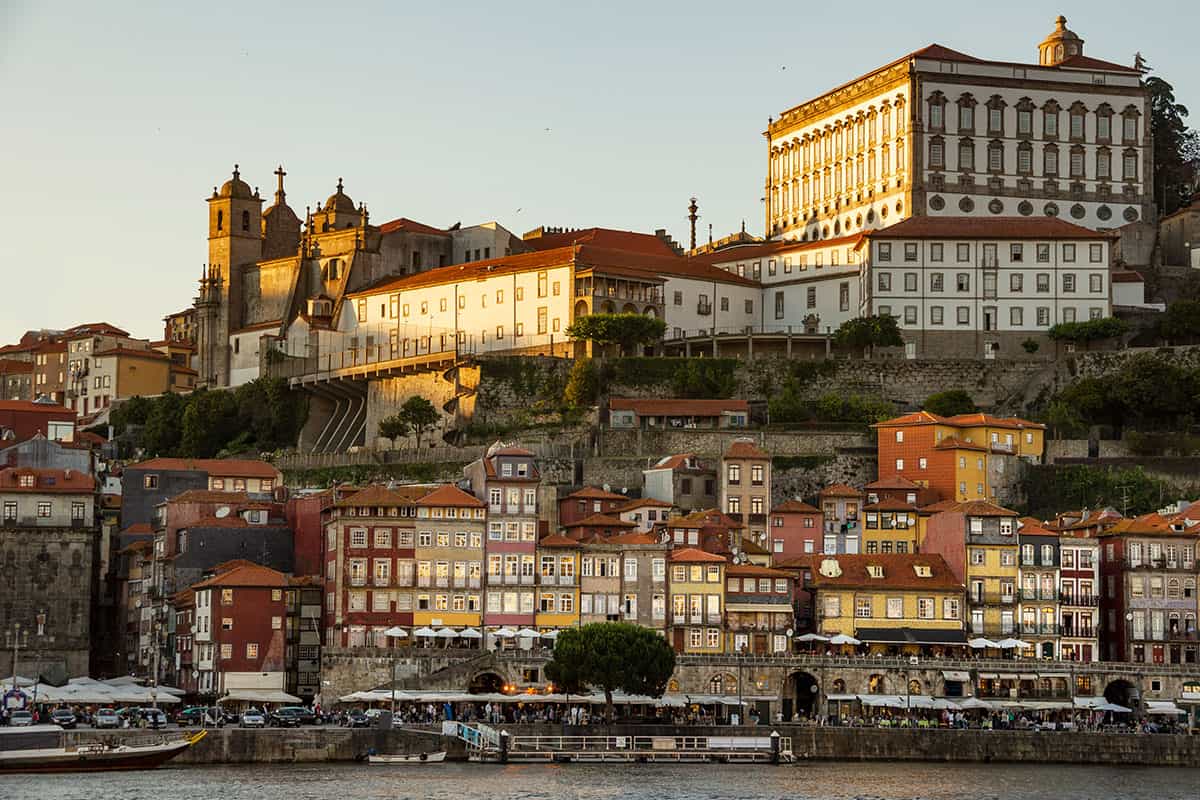
A Weekend Guide to Porto Portugal
Fall in love with the lovely Porto. Our city guide includes the best things to do and see in Porto, Portugal.

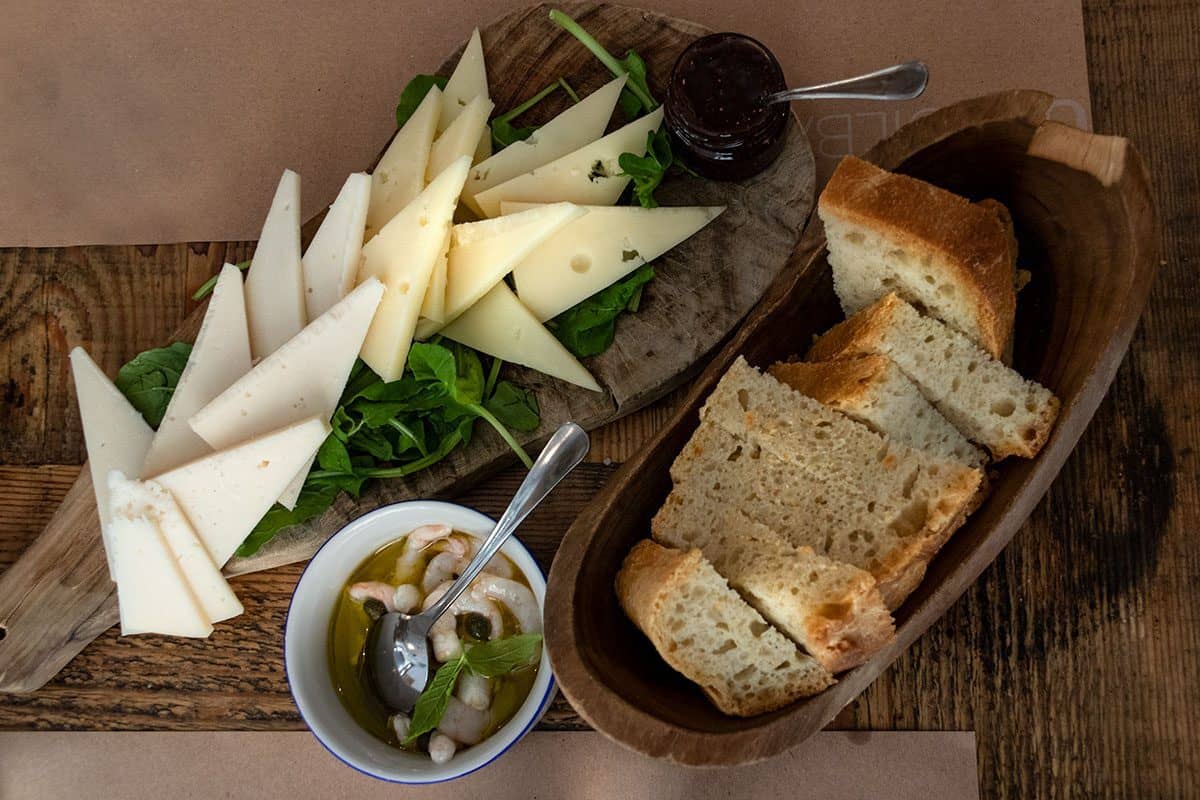
Yum thanks for bringing me back to the most delicious bowl of truffle pasta I ever had in my life! Can’t wait to return – and I think I need to explore more of the wine! Great post.
Thanks so much, Laureen. We know what you mean…Still dreaming about that pasta and the wine!
Loved this guide! I had no idea what kind of type of food this is, but it sounds delish!
Thanks so much, Dana. We love exploring local food, especially in an area like Istria, which is a truly a foodies paradise 😉
Wow, what a comprehensive guide. I’d love to visit some day.
Keeley x
http://www.phatcupcake.com
You should definitely visit the Istrian peninsula one day, Kelley. It has so much to offer!
Needless to say, I am super hungry now, and craving the more Italian influenced dishes (probably because they were closer to the end of the page, and the last things I saw). We haven’t been to Croatia yet, but this is another for the bucket list.
Rhonda, we’re sure you’ll love it. So much to see and do (not to mention munch on), and don’t get us started about the wines…
I have only just started to realize that I like truffles 😀
All the food looks really amazing, and I will for sure save your article for later, seeing as we just started looking into food and wine trips. Happy New Years from Stockholm Sweden 🙂
Happy new year, Ann! Be warned, the world of foodie and wine trips is very hard to escape 😉 Happy truffle hunting and wine drinking!